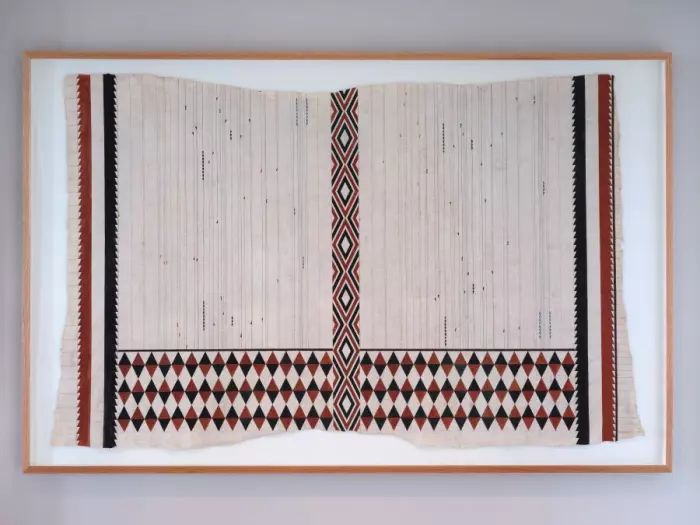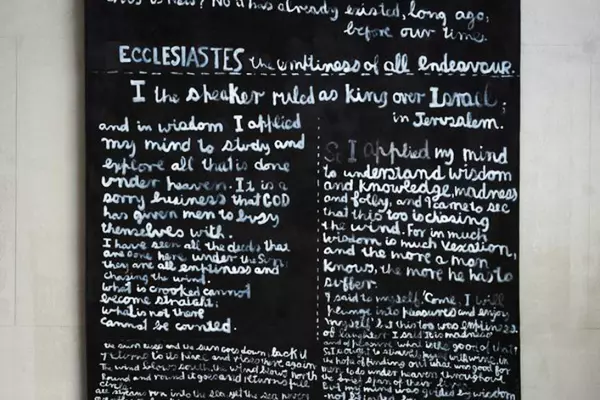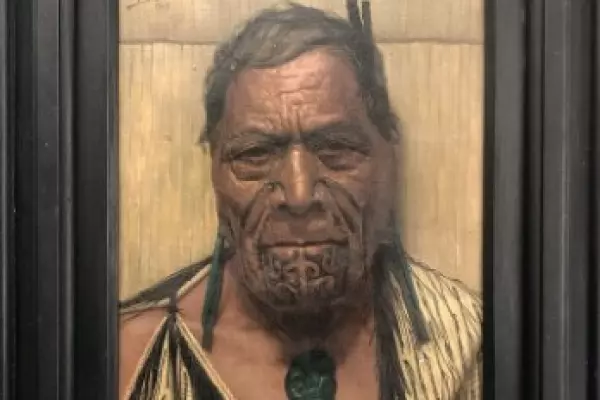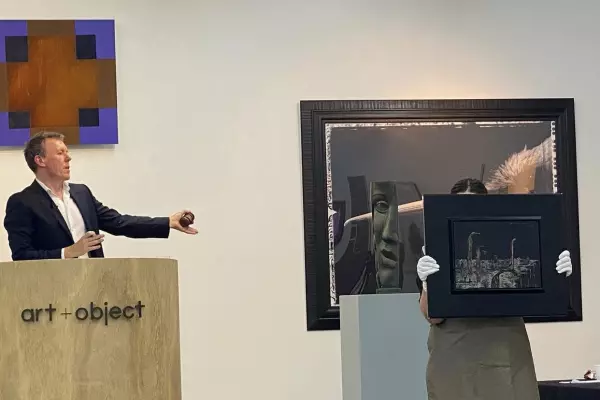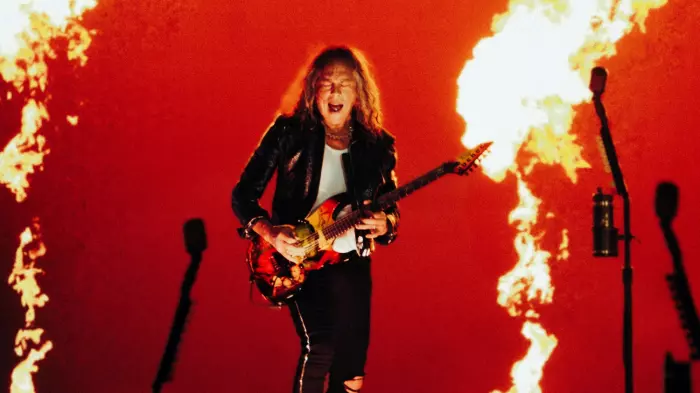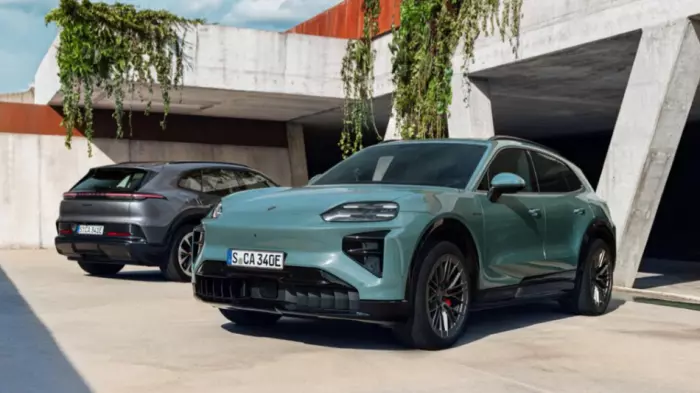Despite the delta lockdown in Auckland that lasted for 15 weeks, the art scene there and throughout New Zealand was a busy place in 2021. The secondary market boomed, new technology quickly became an essential part of the sector, blockbuster international exhibitions appeared on our shores and the art world lost several creative giants. Here are our top 10 events and trends from 2021.
Auction houses had their most successful year on record
Despite not being able to open between August and November because of covid, Auckland auction houses were busy, and enjoyed their best year ever. Their combined turnover of $62m was helped along by some single-vendor sales and increased interest and participation in the secondary art market. To put that in perspective, turnover in each of the previous five years totalled between $27m and $29m.
The highlight of the year for Art + Object was the auction of the Adrian Burr and Peter Tatham collection, which ran over two days and resulted in sales exceeding $12m for the art alone. More than 1000 bidders participated, mainly online, and 30 individual artist record prices were set.
Webb’s continued the expansion of their auction business in 2021, adding two art specialists and architecturally designed premises in Wellington, and planning a satellite office in Christchurch, due to open this year. The company’s turnover also jumped dramatically, from $5m in 2020 to $13.5m in 2021 for the art-related aspects of its business.
International Art Centre continues to be the number-one location in New Zealand to sell the work of CF Goldie and achieved one of the top prices for the year, for the fresh-to-the-market Hori Pokai – A Sturdy Stubborn Chief. The painting, equivalent in size to an A4 piece of paper, sold for $1,668,500 (including buyer’s premium), easily trumping the previous sales of much larger works by the artist. Expect to see the prices for Goldies coming onto the market in 2022 follow suit.
Toi Tū Toi Ora at Auckland Art Gallery Toi o Tāmaki
Although it technically opened in 2020, this groundbreaking exhibition ran well into 2021 and brought together more than 110 contemporary Māori artists from 1950 to the present day. It filled every available viewing space in the gallery and shone a light on some of the best-known practitioners, as well as others who had slipped off the radar during a time when the country’s art history was dominated by a Western perspective. Since the exhibition, there has been increased interest in the work of many of these artists and recognition of the importance of their contribution to New Zealand art.
International blockbuster exhibitions in Wellington
When the borders are open, art enthusiasts happily travel overseas to get their fill of top-quality international art. Blockbuster exhibitions are prohibitively expensive to bring to New Zealand and our small population means that numbers through the doors may not justify the cost of bringing them here. Therefore, Wellington was extremely fortunate to launch two international exhibitions in 2021: Surrealist Art: Masterpieces from Museum Boijmans Van Beuningen, at Te Papa, and Hilma af Klint: The Secret Paintings, which continues at the City Gallery until March 27. The Klint show, in particular, is a huge coup; it was previously staged at the Serpentine Galleries in London and The Met in New York and is on when international interest in the Swedish mystic painter is at an all-time high.
Auckland Art Fair (now renamed Aotearoa Art Fair)
The first covid lockdown, in 2020, put the handbrake on the Auckland Art Fair, requiring the organisers to quickly transform the entire operation to a virtual event with very little notice. In February 2021, the fair was able to open at a time when much of the international art world was still operating online. The event brought together about 30 galleries from the Pacific and 7000 people went through over four days at The Cloud in Auckland. Despite being cut short by one day due to a snap lockdown in the city (which resulted in an emergency pack-down by the gallerists late on the Saturday night), the fair was a great success, with sales exceeding $12.5m.
Increased engagement in a digital space
Technology played a significant part in the changing environment of the art world in 2021, brought on by necessity. With galleries and auction houses physically shut, their audiences increasingly turned to online purchasing via bidding portals at auctions, gallery websites and Instagram. At {Suite} Gallery, for example, trans-Tasman artist Richard Lewer had an exhibition scheduled for November. Because of uncertainty as to whether the gallery would be open then, his works were promoted online, and of the 16 in the show, 13 paintings priced between $9800 and $22,000 were viewed and presold through digital channels.
With auction houses responding to covid by moving online, their auctioneers sold live to empty rooms and clients participated through a bidding app. There was a huge increase in buyer engagement due to the ease and convenience of digital offerings.
The issue of resale and copyright royalty payments to artists popped up again
With greater engagement leading to higher sale prices at auction – some well in excess of the original purchase price – the question of a resale royalty payment and illustration fees paid to artists for reproduction took off on social media. New Zealand law imposes no requirement for either of these payments, and artists Judy Darragh, Dane Mitchell and Reuben Paterson formed Equity for Artists to lobby the government for legislation. After a groundswell of support for the cause, Art + Object announced on Dec 21 that it would be the first auction house to sign up to Copyright Licensing New Zealand’s auction house licensing scheme, meaning artists will be paid when their work is reproduced in an auction catalogue.
Non-fungible tokens (NFTs)
If the art world in 2021 was summarised by one acronym, it would be NFT. Catapulted into mainstream notoriety by American artist Beeple’s sale at Christie’s of The First 5000 Days for US$69m, NFTs (non-fungible tokens) became something akin to a get-rich-quick scheme. What followed the Christie’s sale in March was an explosion of trading platforms, artists, celebrities, content creators and anyone else who wanted to have a go, hoping to capitalise on the NFT craze of quick turnover and high prices. Most of the activity was centred in the US, Europe and Asia, but a couple of businesses in New Zealand, namely Glorious and indigi.nz, appeared in 2021 and are due to launch in 2022 to partner with New Zealand artists and creators to trade in the tokens. Although the artistic quality of some NFTs is verging on kitsch and their environmental impact is huge because of the amount of electricity they use, aspects of the technology are greatly appealing, such as a transparent leger of sales, and a resale payment for artists which could end up revolutionising the art world.
Cordis Art Collection
In previous decades, some large-scale corporates in New Zealand collected art reflecting the interests and values of their leaders who were collectors themselves. This all but fell away in the 1990s and very few businesses have actively acquired the work of contemporary practising artists. But the year just gone saw the creation of a new collection at the Cordis hotel in Auckland.
Hong Kong-based Dr Lo Ka Shui, chairman of the Cordis parent company, Langham, is an avid collector and the Cordis hotel’s luxurious new 17-storey Pinnacle Tower is home to the largest locally commissioned curated art collection in New Zealand. Assembled by curators Coupland Cormack in association with Ngāti Whātua Ōrākei, it comprises 46 commissions from nine of Aotearoa’s most prominent contemporary artists and revolves around three Māori concepts: Te whai ao (the light before dawn), kaitiakitanga (guardianship of the natural world) and manawa (a heartfelt connection, or affection and welcome). Seven of the artists are women and the collection includes painting, sculpture, photography and weaving, thus shining an equal light on some lesser-used mediums.
Rebalancing the art-world order
Another positive change in 2021 was the increased interest in previously overlooked artists and mediums. Just as the Cordis collection emphasises diversity, the art market has also responded to this trend, with huge price gains for the work of many women artists of all periods, including Fiona Pardington, Frances Hodgkins, Louise Henderson and Jacqueline Fahey. The latter two were recently picked up by Gow Langsford Gallery, which could be looking to rebalance the gender representation in its stable, which is very heavy on male practitioners.
It was a great year also for sculpture, with Michael Parekōwhai’s A Peak in Darien fetching the highest price ever paid at auction for an artwork in New Zealand – $2,051,900 (including buyer’s premium). Works by Banksy and Colin McCahon have previously held the record.
Art world deaths
Sadly, every year, there are always a few supremely talented creatives who leave the art world, but the losses of 2021 have felt particularly tough. The year was bookended by the deaths of Bill Hammond in January and Robert Ellis in November, both of whom made an incredible and lasting contribution to New Zealand’s artistic legacy. In September, Billy Apple also passed away, but Auckland was in lockdown, so an in-person memorial service couldn’t be held. That, however, didn’t stop the tributes flowing for New Zealand’s pioneer of pop and conceptual art, who was a fixture at almost every art-world event for decades. Finally, there’s John Perry, the curator, collector and cultural historian who championed the quirky, unique and everyday, and was farewelled at a memorial gathering attended by hundreds at Webb’s. While these artistic giants can never be replaced, it is heartening to see a new breed of artists and curators coming through and expressing their own version of New Zealand’s story in the 2000s.
Briar Williams is a fine arts valuer at Arts Valuations NZ.


